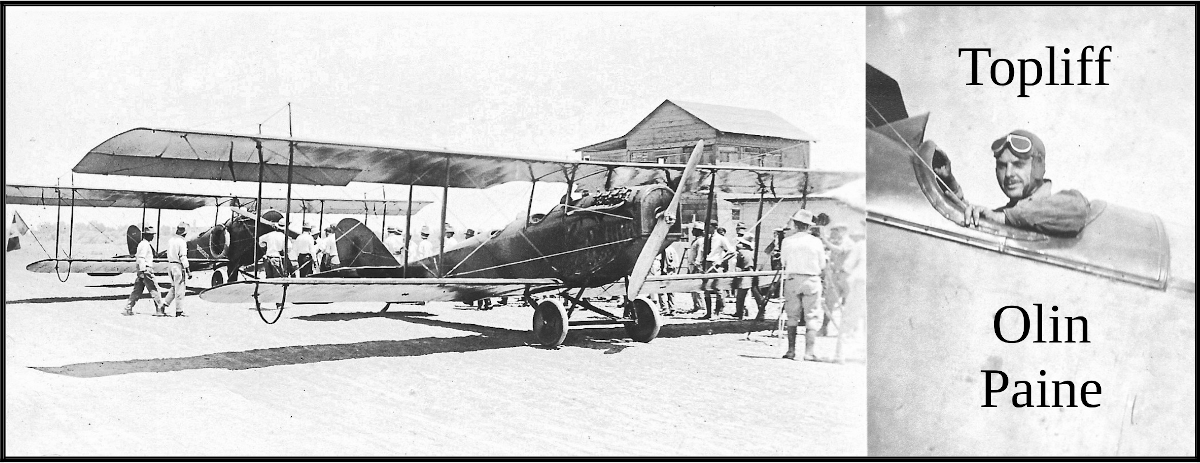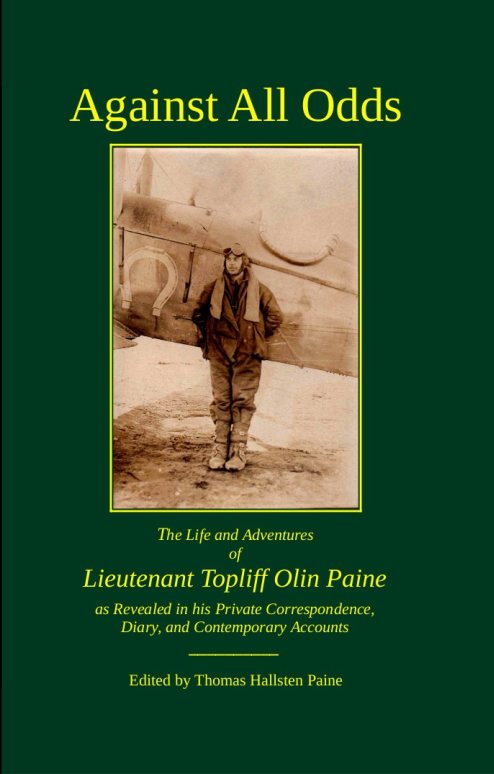
Attention Booksellers
Both editions of this book are now available exclusively to bookstores, libraries, and schools through the Ingram Content Group.

Like other legends of his era, he died before he was thirty. Unlike most others, his accomplishments embraced a far greater range of activities. As a result, he packed more excitement into his short span of years than most people could in ten lifetimes. From severe winter hazards in the mountains of Idaho to confrontations with hooligans as a U. S. Forest Service Ranger. From the challenges of learning to fly an airplane to those of teaching aviation cadets the fine arts of aerial dogfighting as a Stunt Instructor in Aerial Gunnery with the U. S. Army Air Service in WWI. As an aerial entrepreneur, from performing heart-stopping aerial maneuvers at air shows to creating and commanding an air force for the governor of Baja California to protect the territory from invading Mexican troops. From flying the most treacherous section of the transcontinental route for the U. S. Airmail Service to having his airplane’s engine self-destruct in flight. All this and so much more until a tragic and fatal accident at home prematurely ended his life. The accounts in this book are especially compelling as the protagonist himself wrote them in letters to his parents. In addition to the correspondence, there are diary entries from his earlier years and newspaper articles written by the reporters who followed his career. The text is illustrated with numerous never-before-published photographs, many of them taken by Top. Come ride with “Top” Paine on this action-packed journey through the early years of the Twentieth Century! It’s all true, it’s all real, and it’s a trip you’ll neither forget nor regret taking.
About this book...
Details -
Publication Date: August 26, 2020 (Hardcover) and March 26, 2022 (Paperback)
Publisher: Lulu Press
Language: English
ISBN: 978-1-7166-2606-7 (Hardcover) and 978-1-4583-2892-2 (Paperback)
Category: Biographies & Memoirs
Copyright: All Rights Reserved - Standard Copyright License
Contributors: Edited by: Thomas Paine
Specifications -
Pages: 641
Interior Color: Black & White
Dimensions: US Trade (6 x 9 in / 152 x 229 mm)
Table of Contents -
In addition to the Dedication, Preface, and A Note on the Text, the contents include the following chapters/sections:
Early Years
Forest Ranger
You're In The Army (Air Service) Now!
Photographs
Flying Circus
Via Air Mail
Final Flight
Alphabetical Index
Description -
This work contains the private correspondence between Topliff Olin Paine (the aviator for whom Paine Field in Everett, Washington, is named), his parents, and other family members. Also included are correspondence from others who knew him, his diary, and contemporary newspaper articles covering Top's various undertakings.
In addition to introductory biographical information, the text's documentation covers Top's time with the U. S. Forest Service, his activities during World War I in the U. S. Army Air Service as a stunt instructor in aerial gunnery, his adventures as an "aerial entrepreneur," and his experiences as a pilot with the Western Division of the then-fledgling U. S. Air Mail Service.
Overall, this work constitutes a first-person account of a life of adventure in the early years of the last century. It is also a collection of primary-source documents that may be of value to the historian as well as entertaining to the casual reader. The text is illustrated with numerous never-before-published photographs, many of them taken by Top.
Samples from the text...
From the chapter Forest Ranger
Page 80:
Reviews
Review by Pianofan
A "must" for aviation buffs, historians, and adventure fans
Reviewed in the United States on April 23, 2022
Many of the Northwest residents who fly in and out of Paine Field in Everett, WA, may have no idea for whom the airfield is named. This new book tells Topliff Olin Paine's life story, through his own private correspondence with family members and others, as well as accounts from newspapers and passages from his diary. The book, created and edited by grandnephew Thomas Paine, gives a well-rounded and detailed portrait of an adventurous, resourceful, and good-hearted flyer who clearly valued his family and friends, as well as his next feat of aerial daring. The source materials show a brave man of considerable daring and ingenuity, without the self-aggrandizement or the large ego that one might expect of such an aerial pioneer. He worked for the U.S. Forest Service; he served in the World War I U.S. Army Air Service, initiating new flyers in the arts of aerial gunnery; he flew for the U.S. Mail Service; he was a good son and a caring friend. His bravery and boldness are remarkable: some of the book's most harrowing passages are accounts of Paine's daring flights at almost zero visibility (and no modern instruments!) through heavy snowstorms in the Rockies. The book is handsomely presented in both hardback and paperback. Highly recommended for aviation buffs, and fans of local history.
Review by Bob M
Fascinating Look into the Life and Times of an Aviation Pioneer
Reviewed in the United States on July 18, 2021
This is a very entertaining book about aviation pioneer pilot Lt Topliff Paine in whose honor Paine Field in Everett, WA is named. In a way it was written by the pilot himself since it is made up primarily of personal letters written by him to his parents and other family members. It was edited by the pilot's grand nephew Thomas Paine using a collection of original family letters, photos, and news clippings.
The time period covered is from 1908 until the pilot's death in April 1922. In addition to the original letters Tom has included text from newspaper accounts and other sources as well as his own explanations to set the context.
The letters describe the pilot’s adventures in early aviation, the U. S. Army Air Service and the U. S. Airmail Service. They also include a first-person account of what life was like in the first two decades of the 1900’s during WW1 and the Spanish flu pandemic.
There are many illustrations in the book including photos taken by Lt. Paine. It can be read front to back to learn of Top’s life in chronological order or do as I have and use the detailed index to read about subjects of particular interest. Each time I pick it up and read different stories, I find it very entertaining and enlightening.
The publication is timely with the recent opening of the award-winning commercial passenger terminal at Paine Field in Everett, WA. where passengers are greeted by a life size bronze statue of the pilot. This book provides an excellent way to learn his story.

About me...
Thomas Hallsten Paine is a grandnephew of Topliff Olin Paine and a native of Everett, Washington. He is a graduate of Everett High School and of Everett Junior College with an Associate in Arts and Sciences degree in Chemistry. He also has a Bachelor of Science degree in Organic Chemistry, magna cum laude, Phi Beta Kappa, from the University of Washington.
For twenty years he operated a custom-design fine jewelry business in Everett called, "Thomas Paine — Fine Jewels of the World." His hobbies include nature photography, playing the trumpet, song writing and singing, gold panning, metal detecting, and writing short stories and flash fiction. He is now retired and lives in Eastern Washington with his wife and family.